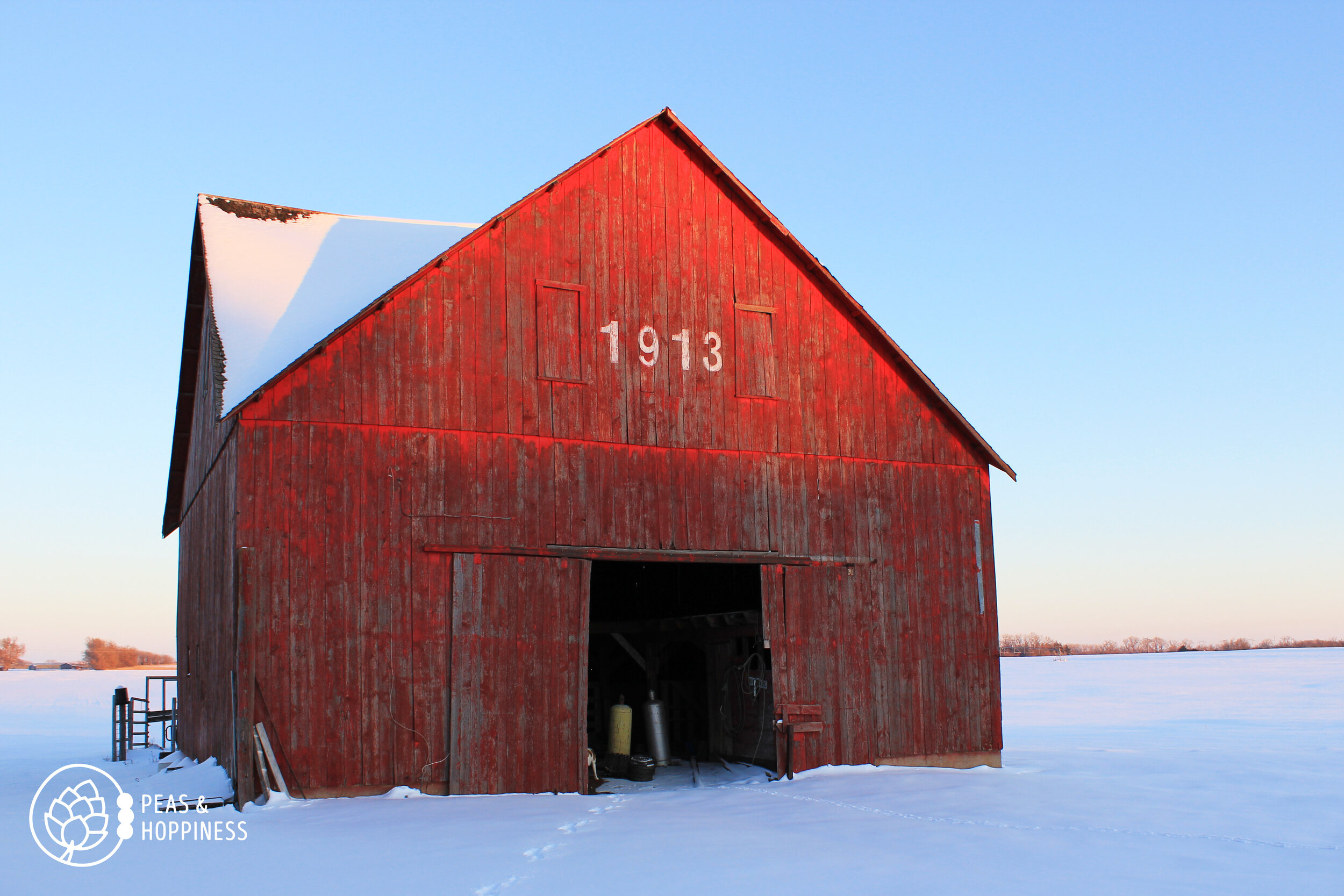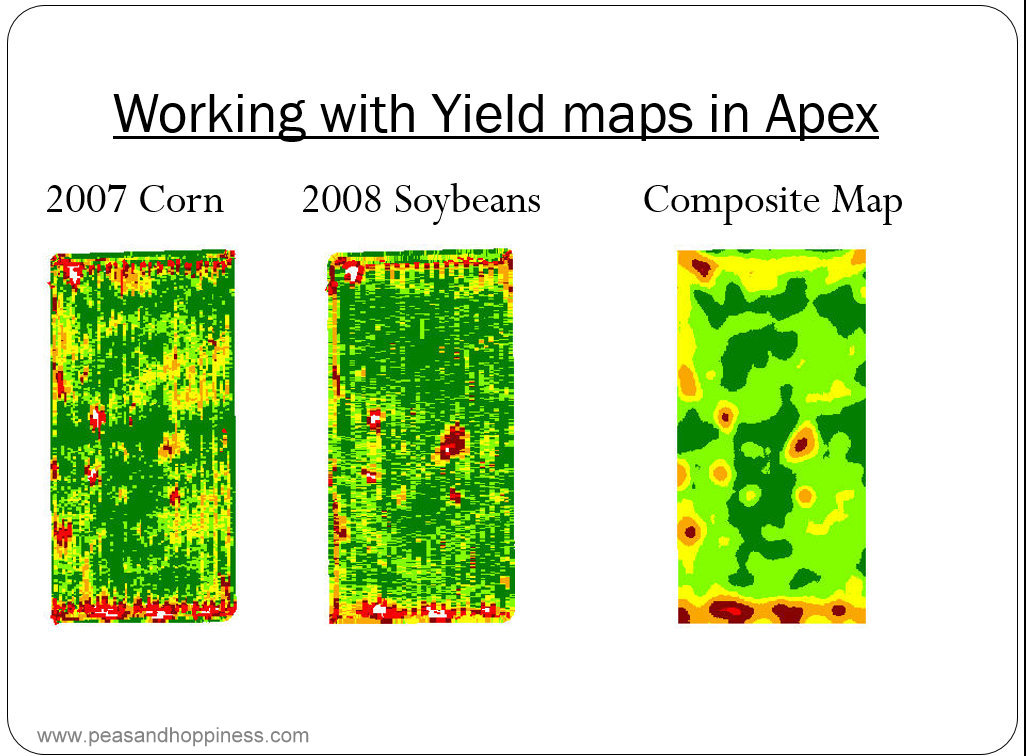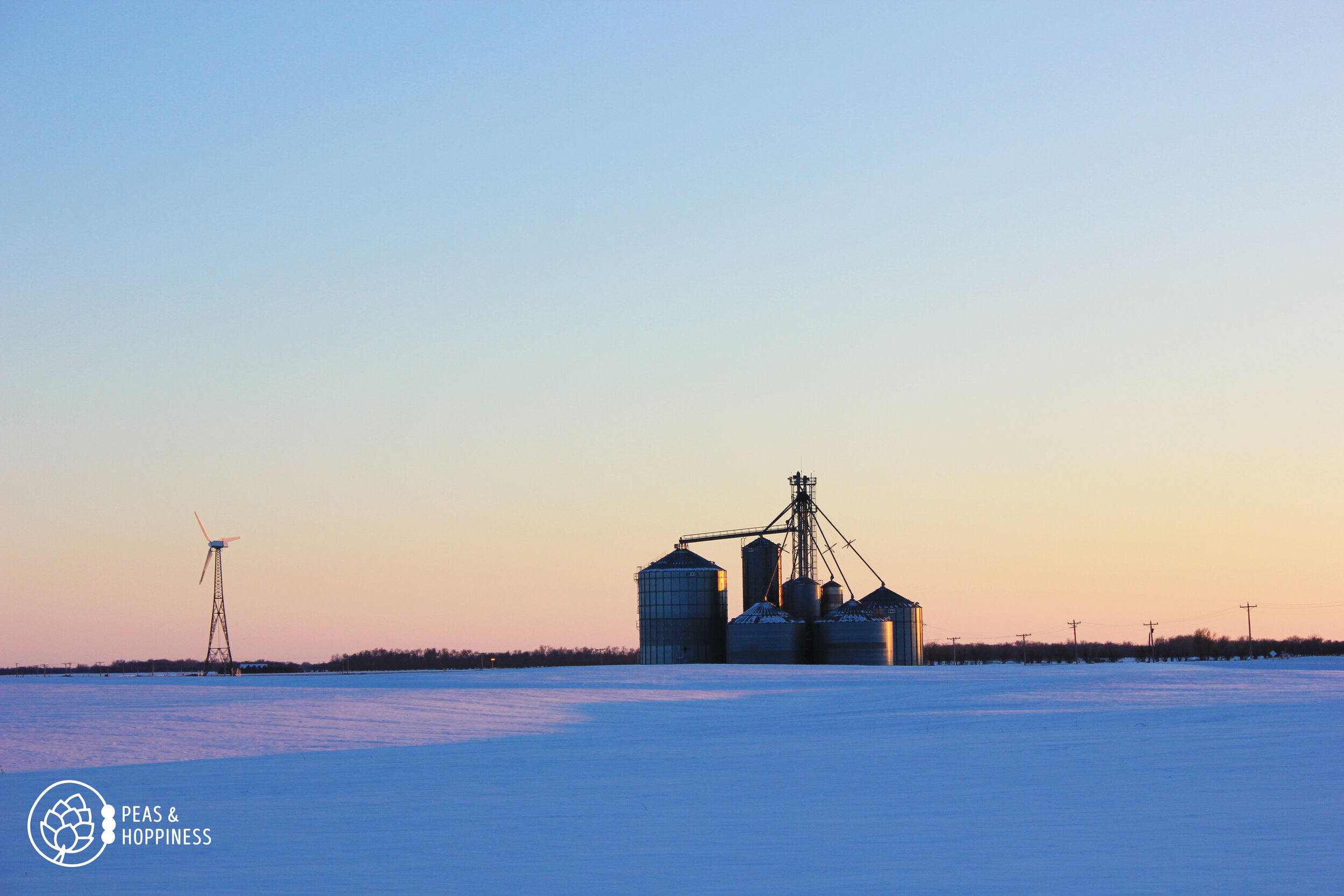I work an 8-to-5-ish job. I have weekends and holidays off, I accrue PTO, and if I’m deathly ill, I have (amazing) coworkers who will step up to cover for me.
This does not describe the life of a small business owner, such as a farmer.

The Old Red Barn
A small business owner works the hours he needs to – meaning 16-hour days during harvest – and takes time for herself when she can. For most farmers, this means that if you want to take a vacation, it’s probably going to be in the dead of winter.
So what exactly does a farmer do when the combine is in the shed? Quite a bit, actually.
Farmers Learn: Research & Continuing Education
This is probably the #1 priority for my farmer-parents. I’m sure that I acquired my love of learning from them – both via nature and nurture. Lee and Margaret Scheufler are constantly asking how they can do more with less, thinking about ways to improve the efficiency of their operation, and using data to answer those questions.
Because most field work takes place in the spring, summer, and fall, most ag-related conferences take place in the colder months.

An excerpt from one of Dad’s presentation, in which he presents GPS yield map data (different colors represent different yields in 25-foot squares) to identify which parts of the field are more productive.
Yes, that’s right. Just like the Academy of Nutrition and Dietetics holds an annual conference to update us RDNs (that’s Registered Dietitian Nutritionists) on the latest nutrition research and guidelines, so too are there many different organizations in the farming community that host such events. My parents have attended many conferences and even presented their own on-farm research at quite a few.
What, might you ask, does a farmer need to research? After all, haven’t farmers been farming for thousands of years? There are lots of demands put on a modern farmer: produce more food for an ever-growing global population and at the same time minimize inputs, reduce carbon emissions and pollution, and do so using a finite amount of soil.
Here are some of the topics of recent agriculture conferences:
-
Do cover crops improve the quality of the soil?
-
How many plants can you grow in an acre to maximize the space without reducing the yield because of over-planting (that is – What is the ideal seeding rate, seeding depth, row spacing, etc?)
-
What is the ideal fertilizer placement and rate for wheat/corn/milo?
-
Does interseeding a cover crop enhance the primary cash crop? (I.e. – does planting a cover crop between the rows of corn/wheat/soybeans improve the yield?)

Little Ann visiting cousins Dale and Adam in Arizona – a perfect winter family vacation

When it’s cold, the family comes to visit and we all go out to sushi!
Farmers Prepare for the Following Year
Even though there might not be things to do outside, there is always plenty to do to prepare for the time when there is.
Bills, taxes, and accounting
Yeah, the really fun stuff. Remember, farming is a business. It’s not a garden in which you grow produce for your family; it’s not a charity in which it doesn’t matter if you give more than you take in (because that would mean bankruptcy – not that farmers aren’t generous).
They say the devil is in the details – and there are a lot of details when it comes to farming. Here are a few of the things my mom keeps tabs on:
-
Amount of fertilizer, pesticide, and herbicide purchased, where these were applied and subsequent billings to landlords who share in the expense of some portions
-
Harvest records and crop yields for government program reporting, crop insurance, and landlord grain divisions
-
Current grain inventory for marketing farm production (that is, selling the grain)
-
Payroll of full-time and part-time employees, as well as the subsequent withholding taxes and contributions to retirement funds
-
Bank accounts and reconciliations
-
Preparations of financial statements
-
Individual and corporate income taxes

Yield map data is used to determine the right amount of fertilizer to apply in different parts of the field. Different rates are applied to reduce runoff and increase yield.

In the tractor or sprayer, the prescription map is used to vary the rate at which fertilizer is applied.
Planning for field work
To prepare for planting, my dad creates seeding maps that he will upload into his planter to vary the rate of how many seeds are planted based on his data about how many plants the soil in the given area of the field can handle. It’s based on the yield map of the previous year (and all recorded using GPS).
Dad also uses these numbers to determine how much seed and fertilizer to buy. He consults with Nathan from CropQuest, who is an agronomist with a degree in the science of soil management and crop production. Together they target the right time to apply fertilizer as well as what kind of fertilizer he needs (nitrogen or phosphorus? It makes a big difference depending on the crop and what nutrients the soil has to begin with).
They also discuss and prepare a herbicide plan for the current crop year. Dad can early-order the chemicals he will need, assuring availability and frequently a better price.

Farmers at the beach!
Farmers Vacation!
Yep, even farmers take a break once in a while (actually, they only seem to truly relax when they physically can’t do anything on the farm…).
My folks love to travel. San Diego. Argentina. Cancun, Mexico. Europe. Arizona. Whether it’s to visit family, spend time traveling with friends, visit an absentee landlord, or just to relax with the kids (that includes me! Yay!), January (or one of the other winter months) is the time when all of the big trips take place.
Although the world may seem more quiet when blanketed with snow, it does not mean that nothing happens. Work, fun, and life always continue.
So may you enjoy your winter. With love, from Peas and Hoppiness.

The farm is a bit quieter when it’s blanketed by snow <3
Looking for ways to promote sustainable agriculture? We’ve teamed up with Colorado local farmer Joe Miller to write recipes & meal guides which help you use your local, seasonal produce!